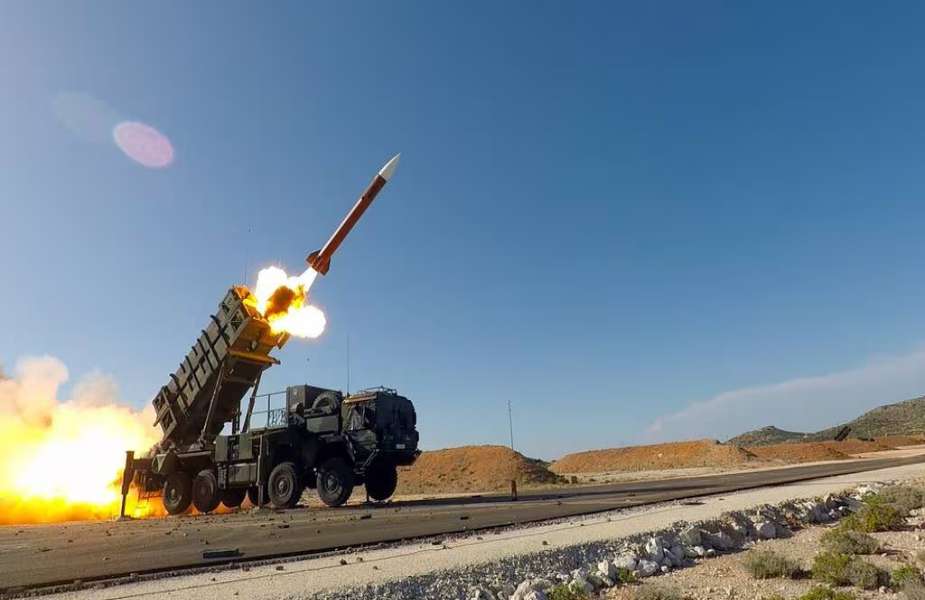Breaking news
US seeks Japanese-made Patriot Missiles to aid Ukraine.
The Japanese government is on the verge of supplying Patriot air defense missiles to the United States, a decision that marks a radical shift in its defense policy, which has long been anchored in pacifism. This news, reported by Nikkei, signals a major revision of Japan's restrictive policies on arms exportation.
Follow Army Recognition on Google News at this link

Patriot PAC-3 Japan-made missiles can intercept targets within a range of 20 to 30 kilometers (12 to 19 miles). (Picture source: US MoD)
Japan's National Security Council is expected to make the final decision by the end of the month, ending decades of restrictions that prevented Japan from exporting weapon systems. This move follows the reform of the "three principles" limiting arms exports, initiated by former Prime Minister Shinzo Abe in 2014. This revision aimed to strengthen Japan's strategic alliances while establishing strict criteria for military equipment exportation, aligned with contributing to peace and international security.
These principles initially prohibited arms exports to communist countries, UN arms embargoed nations, and countries involved in armed conflicts.
The Patriot missiles, guided surface-to-air defense systems, are manufactured under license in Japan by the American defense conglomerate Raytheon. Until now, Japan could only export components of these systems. The planned regulatory revisions will now allow the export of complete weapon systems to the country of the license's origin, paving the way for exporting Patriot missiles to the United States.
This decision could also have an indirect impact on the situation in Ukraine, given that the United States has supplied Patriot missiles to Ukraine, currently in conflict with Russia. Although the Japanese missiles are not intended directly for Ukraine, they could help replenish American stocks, thus indirectly supporting the country at war.
By revising its principles of defense equipment transfer and application guidelines, Japan shows an increasing willingness to engage alongside the USA actively. This decision comes in a context where Tokyo is concerned about Russia's aggressive actions, fearing similar repercussions from China towards Taiwan. Prime Minister Fumio Kishida, at a historic summit with the United States and South Korea, has already expressed his support for Ukraine, thus marking Japan's firm stance against Moscow's aggressions.
Since the beginning of Russia's invasion of Ukraine, Japan has provided Ukraine with non-lethal military assistance, by its principles of defense equipment transfer and technology. This assistance included supplying about 100 military transport vehicles. Among these vehicles were light transport trucks of the Mitsubishi Type 73, based on Mitsubishi Motors' Pajero. Japan also provided off-road vehicles of the Japanese army Toyota Kohkidosha, a local variant of AM General's Humvee, and Morooka tracked dump trucks. In addition, about 30,000 emergency food rations were supplied to Ukraine.
Japan has also contributed to humanitarian and support programs in Ukraine, including providing funds to the United Nations Development Program (UNDP) for demining, debris removal, and generator supply, as well as non-lethal protective equipment such as bulletproof vests and helmets.
For reference, the operational range of the Patriot missile system varies depending on the variant. Typically, the Patriot PAC-3 missile can intercept targets within a range of 20 to 30 kilometers (12 to 19 miles), while its radar, the AN/MPQ-53, can track targets over 160 kilometers (100 miles) away.
The mobility of the Patriot system is another significant advantage, allowing for rapid deployment and repositioning in response to changing battlefield conditions. This adaptability enables the protection of specific high-value targets or provides broader area defense, making it a crucial asset in modern military operations.


























